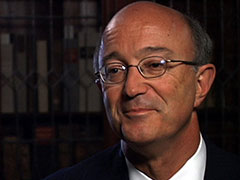 | |
 |
 |  |
 |
The cutting edge in cardiac imaging is a multi-dimensional approach that combines the strengths of different technologies.

     | |
 |
 |
 |
 |
Today, we can perform 3-D and 4-D ultrasound imaging with nonradioactive contrast materials. This approach allows us to actually look at blood-flow patterns with nominal risk from an intravenous agent. We can scan the heart at rest and during exercise to check for valvular and muscular function. We are now able to quickly and safely provide a complete rendering of the heart's strengths and weaknesses from within the office setting, which was not easily done when this e-seminar was originally launched.
For those cases requiring surgery, current CT and MR technology, along with enhancements in echocardiograms and ultrasound, now gives the surgeon a much clearer roadmap as to what will be found intraoperatively. No surgeon likes a surprise, and now we can provide a very detailed anatomical and functional view of the heart before the surgeon arrives in the operating room. And it will someday be possible for us to operate on adults with less dependency upon invasive technology, in much the same way as we now have a track record of successful surgeries on children involving noninvasive preoperative imaging.
In the near future, MRI and MRA scans may be able to provide, without radiation, the same level of detailed information currently available only through an angiogram. These noninvasive magnetic tests take minutes to complete, and they can be performed in an outpatient setting with no risk to the patient. By combining the findings of these two tests, we will even be able to determine whether or not viable muscle still exists in the sickest of patients—those who have already suffered heart failure, heart attacks, or viral infections. Currently, advances in CT angiography have eclipsed MRA in this area with the only drawback of CT being the need for an intravenous contrast agent and X-ray exposure.
 
|





